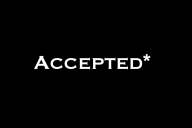You have /5 articles left.
Sign up for a free account or log in.
Stanford University’s Niall Ferguson may be the platonic ideal of conservative hypocrisy on “diversity of thought.” Last week Ferguson, noted defender of British colonialism and organizer of all-white-male conferences, was caught conspiring to dig up “opposition research” against a progressive student. Apparently lacking a sense of irony, Ferguson was one of the leaders of Stanford’s Cardinal Conversations, a series of talks aimed at broadening the ideological diversity on campus.
It should go without saying that spying on student activists, regardless of their politics, is a deep breach of trust. Attacking students politically, or looking for information that can harm their future, violates our role as educators in helping student learn how -- not what -- to think about complex ideas. The Family Educational Rights and Privacy Act, or FERPA, stipulates that absent student permission, professors shouldn’t even talk with parents about student’s grades, leading me to assume opposition research is beyond our mandate. But aside from the ethical breach, Ferguson’s actions are clear evidence that calls for alleged diversity of thought rest on a number of faulty premises.
The first faulty premise is the idea that those who call for diversity of thought and free speech are arguing in good faith. Certain conservative foundations, activists and professors have used diversity of thought as a political tactic to exert power over higher educational institutions. This rhetorical move -- like appeals to merit or free speech -- works precisely because everyone likes to believe that so-called diversity of thought is an unabashed good. Robust debate in the search of truth is a general academic principle. The key here is that this is a political project aimed at making racist and misogynist ideas acceptable.
In my own specialty area of race and ethnicity, various right-wing think tanks and foundations support authors who promote racist ideas that serious scholars have roundly criticized and debunked. Take something like the “acting white” hypothesis. Proponents of that hypothesis hold that the achievement gap between black and white students can be explained by a deficient black culture that doesn’t value education. In this mythology, high-performing black students are supposedly taunted with the claim that doing well in school is a white trait. The best available quantitative and qualitative research shows that there is little evidence for this claim. In general, black students have a greater belief in the power of education than similarly situated white students. Yet rather than blaming the resegregation of schools, which is designed to keep students of color from having equal access to educational resources, conservatives promote a victim-blaming narrative.
Calls to “teach the controversy” surrounding evolution or attempts to cast doubt on the science of climate change follow a similar logic, attempting to undermine disciplinary consensus. Of course, that doesn’t mean educators should avoid these issues in class, but rather, they should show how accumulated evidence has led to those conclusions despite political disagreements.
The second false premise that promoters of so-called diversity of thought rely upon is that conservative ideas are marginalized in higher education when, in fact, they are ubiquitous. Universities’ fights with graduate unions, the increasing reliance on contingent labor and the retreat from affirmative action are not symbols of a left victory in higher education. Rather, such trends point to the political dominance of conservative thought in higher education.
Further, students are often comfortable expressing racist ideas, as are some of our colleagues. Claiming genetic intellectual inferiority of nonwhites is still a viable line of research, and institutions sometimes victim blame women who face abuse. Calling for more of this thought is in no way about expanding the space of academic debate. Seen in this light, calling for more diversity of thought is not a cry from an underrepresented group but rather a way to further entrench disenfranchising trends.
A third premise that should be strongly questioned is the very idea that conservative thought is diverse. What is diverse about a body of thought reliably in support of a reactionary status quo? Those people who claim universities are insufficiently open to conservatives often pose as brilliant, renegade outsiders, presenting dangerous knowledge that the politically correct educational establishment has unfairly marginalized. But there is nothing edgy or very thoughtful about denigrating people of color or women, assuming that the natural order of the world is out of order because we had a black United States president or attacking trans students for simply existing. Much of what counts of edgy for folk like Ferguson is simply self-serving masculinist bluster. And much of what counts as dangerous is more accurately described as wrong.
Little statistical evidence suggests that a credible threat exists to white or male dominance in higher education or the American political system writ large. This is in contrast to the vast body of evidence that discrimination against people of color and women in higher education is simply a fact of life and minority faculty remain underrepresented.
Conservative ideas are hegemonic. The (empty) call for so-called diversity of thought is a Trojan horse for white identity politics. It is no coincidence that the majority of people advocating for this position are white men who feel slighted by an imagined diminution of their power. They remain stubbornly at the top of the organizational hierarchy across the landscape of higher education, and their calls for so-called diversity of thought are attempts to extend this lead.




